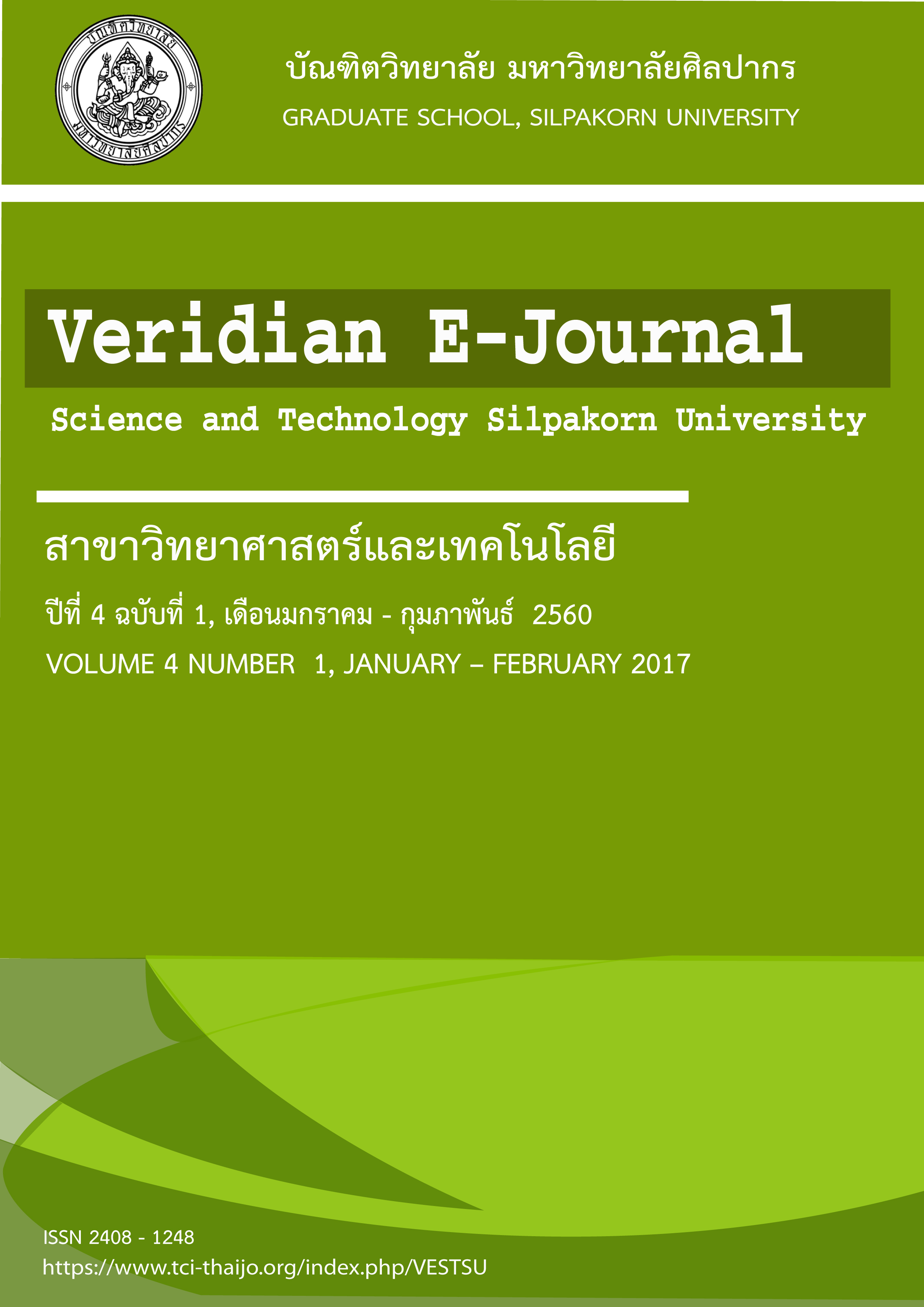รูปแบบการใช้ยาลดระดับน้ำตาลในเลือดและตัวชี้วัดคุณภาพบริการคลินิกเบาหวาน (TCEN เบาหวาน) ในผู้ป่วยโรคเบาหวานชนิดที่ 2 ณ โรงพยาบาลสมุทรสาคร
Main Article Content
Abstract
โรคเบาหวานจัดเป็นปัญหาสำคัญทางสาธารณสุขทั่วโลก โรคเบาหวานและภาวะแทรกซ้อนจากโรคเบาหวานส่งผลกระทบต่อผู้ป่วยเป็นอย่างยิ่ง ทั้งในด้านสุขภาพกาย สุขภาพจิต และภาระค่าใช้จ่ายด้านสุขภาพทั้งของผู้ป่วยเอง ตลอดจนระบบสาธารณสุขโดยรวมของประเทศ ด้วยเหตุนี้ผู้วิจัยจึงตระหนักถึงความสำคัญของการดูแลรักษาผู้ป่วยเบาหวานอย่างเหมาะสมและต่อเนื่อง และสนใจที่จะศึกษาถึงรูปแบบการใช้ยาลดระดับน้ำตาลในเลือด ผลการควบคุมระดับน้ำตาลในเลือด และตัวชี้วัดคุณภาพบริการคลินิกเบาหวาน (Toward Clinical Excellence Network’s Diabetes Indicators; TCEN เบาหวาน) ในผู้ป่วยเบาหวานชนิดที่ 2 ณ โรงพยาบาลสมุทรสาคร เพื่อเป็นข้อมูลพื้นฐานสำคัญในการประเมินแบบแผนการดูแลรักษาผู้ป่วยของทางโรงพยาบาล ตลอดจนเป็นข้อมูลสำหรับการเปรียบเทียบคุณภาพการดูแลรักษาผู้ป่วยเบาหวานกับโรงพยาบาล อื่น ๆ ในประเทศไทยต่อไป การศึกษานี้เป็นการศึกษาเชิงพรรณนาแบบย้อนหลัง ในผู้ป่วยเบาหวานสิทธิหลักประกันสุขภาพถ้วนหน้าและสิทธิประกันสังคม ซึ่งได้รับการสุ่มคัดเลือกจำนวน 349 ราย ที่มาเข้ารับบริการที่แผนกผู้ป่วยนอกของโรงพยาบาล ในช่วงเดือนเมษายน พ.ศ. 2553 ถึงเดือนเมษายน พ.ศ.2554 โดยเก็บข้อมูลจากเวชระเบียนผู้ป่วยนอก (OPD card) และฐานข้อมูลคอมพิวเตอร์ของโรงพยาบาล (HOSxP) จากการศึกษาพบว่าผู้ป่วยมีอายุเฉลี่ย 51.3±8.6 ปี ส่วนใหญ่เป็นเพศหญิง (ร้อยละ 65.9) อายุระหว่าง 41-60 ปี (ร้อยละ 78.2) ในระยะเวลาหนึ่งปี ผู้ป่วยมาเข้ารับบริการรวมทั้งสิ้น2,044 ครั้ง มีระดับ fasting blood sugar (FBS) และ glycated hemoglobin (HbA1c) อยู่ในเกณฑ์ควบคุม (70-130 มก./ดล. และ ต่ำกว่าร้อยละ 7) รวม 638 ครั้ง (ร้อยละ 33.0) และ 90 ครั้ง (ร้อยละ 30.9) ตามลำดับ (คำนวณร้อยละจากจำนวนครั้งที่มีการตรวจค่าดังกล่าว) จำนวนยาลดระดับน้ำตาลในเลือดเฉลี่ยที่ผู้ป่วยได้รับในแต่ละครั้งเท่ากับ 2.0 ตัว (ช่วง 1-4 ตัว) โดยกลุ่มยาที่มีการใช้มากที่สุด คือ biguanides (ร้อยละ 86.5) และ sulfonylureas (ร้อยละ 80.0) สำหรับตัวชี้วัด TCEN เบาหวานที่เป็นไปตามเป้าหมายมีเพียง 3 เกณฑ์จากทั้งหมด 18 เกณฑ์ ได้แก่ อัตราการรักษาตัวในโรงพยาบาลเนื่องจากภาวะแทรกซ้อนเฉียบพลันจากโรคเบาหวาน (ร้อยละ 4.6) อัตราผู้ป่วยเบาหวานที่มีแผลที่เท้า(ร้อยละ 3.7) และอัตราผู้ป่วยเบาหวานที่ได้รับการตัดนิ้วเท้า เท้า หรือขา (ร้อยละ 0) จากเกณฑ์เป้าหมาย คือ ต่ำกว่าหรือเท่ากับร้อยละ 5, ต่ำกว่าหรือเท่ากับร้อยละ 10 และร้อยละ 0 ตามลำดับ การศึกษานี้แสดงให้เห็นว่าผู้ป่วยส่วนใหญ่ยังไม่สามารถควบคุมระดับน้ำตาลในเลือดให้อยู่ในเกณฑ์ที่เหมาะสม และยังมีตัวชี้วัดคุณภาพบริการคลินิกเบาหวานอีกหลายข้อที่ยังไม่บรรลุเกณฑ์เป้าหมาย ทางโรงพยาบาลจึงควรหาแนวทางในการปรับปรุงประเด็นเหล่านี้ เพื่อยกระดับคุณภาพการดูแลรักษาและคุณภาพชีวิตของผู้ป่วยเบาหวานชนิดที่ 2 ต่อไป
Diabetes mellitus (DM) is a major public health problem worldwide. DM and its complications hugely impair a patient’s health, both physically and psychologically. They also place substantial financial burdens on both patients and the country’s health system. Due to the realization of the importance of continuous and appropriate patient care, this study focused on antihyperglycemic drug use patterns, glycemic control and the ‘Toward Clinical Excellence Network’s Diabetes Indicators’ (TCEN DM) among patients with T2DM at Samutsakhon Hospital. This was aimed to provide important baseline information enabling the hospital to evaluate its DM care practice and compare the quality of DM care with other hospitals in Thailand. This retrospective, descriptive study included 349 T2DM patients with the Universal Coverage and Social Security Schemes attending clinical visits at the outpatient department of the hospital during the period from April 2010 to April 2011. Their data were obtained from OPD cards and the hospital’s computer database (HOSxP). The included patients’ mean age was 51.3±8.6 years. The majority of them were female (65.9%) and aged between 41-60 years (78.2%). In one year’s duration, the total number of the patients’ clinical visits was 2,044. The numbers of visits when the patients could have their fasting blood sugar (FBS) and glycated hemoglobin (HbA1c) controlled (70-130 mg/dl and <7%) were 638 (33.0%) and 90 (30.9%), respectively (the percentages being calculated based on the total number of visits with each test). The mean number of antihyperglycemic drugs received per visit was 2.0 (range: 1–4), with biguanides (metformin) and sulfonylureas being most commonly used (86.5% and 80.0%, respectively). With regard to TCEN DM, only 3 out of 18 indicators, i.e., rate of hospitalization due to acute DM complications (4.6%), rate of patients having a DM foot ulcer (3.7%) and rate of patients requiring their toes, foot or leg cut off (0%), achieved the targets (≤5%, ≤10% and 0%, respectively). Our study reveals that the majority of patients could not control their blood sugar levels, and a number of TCEN DM indicators of the hospital had not achieved their targets yet. The hospital should therefore find a strategy to improve these in order to enhance the quality of DM care and quality of life for T2DM patients.

